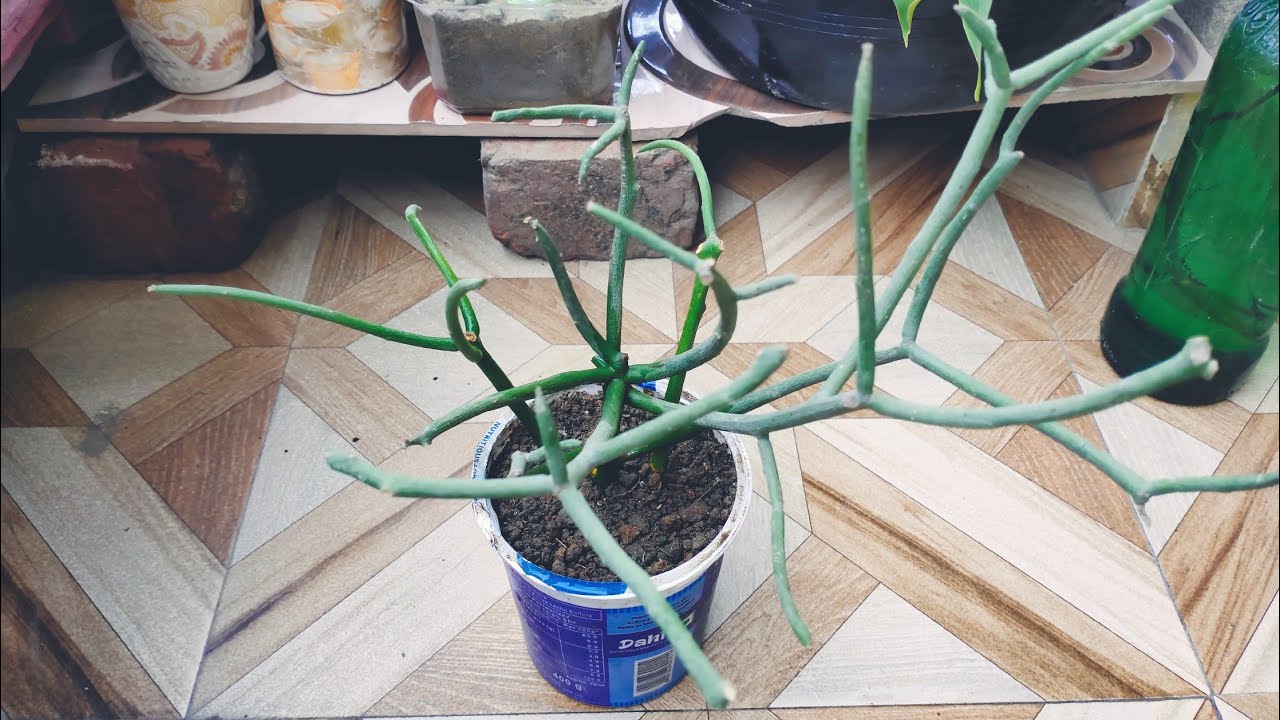The pencil cactus, or Euphorbia tirucalli, is often heralded as a botanical enigma, with its slender, elongated stems resembling green pencils poised for the artistry of nature. Renowned for its unique appearance and resilience, this succulent has become a favorite among both novice and seasoned plant enthusiasts. However, understanding the nuances of propagation—particularly from cuttings—can transform your experience with this remarkable plant.
Propagating a pencil cactus is not merely a horticultural task; it is akin to crafting your own verdant masterpiece. Each cutting holds the promise of new life, a tangible connection to the earth’s bounty. In this guide, we will delve into the step-by-step process of propagation, the conditions for successful growth, and the enchanting characteristics that make the pencil cactus a cherished companion in any collection.
Before embarking on this journey, it is essential to equip yourself with knowledge about the pencil cactus’s unique needs and the specifics of its propagation.
Understanding the Pencil Cactus: Nature’s Green Adversary
The pencil cactus is not truly a cactus but rather a succulent from the Euphorbia family. This plant is indigenous to Africa and can grow to astonishing heights—up to 30 feet in the wild! Its spindly, phallic stems highlight its ability to adapt to arid climates, showcasing its tenacity even in the harshest conditions. Each branch can exude a milky latex sap that serves as a defense mechanism against herbivores.
The striking appearance of the pencil cactus makes it an eye-catching centerpiece for any room, while its low-maintenance requirements cater to the busy urban dweller or the engrossed plant parent. With proper care and propagation, you can enjoy a thriving ecosystem of pencil cacti that inspires both creativity and serenity.
Gathering Your Materials: The Alchemy of Propagation
To successfully propagate your pencil cactus from cuttings, gathering the right materials is essential. Think of this process as assembling your artist’s palette. Here’s what you’ll need:
- Sharp, Sterile Knife or Shears: Precision is key when taking cuttings. Ensure your tool is sanitized to prevent disease.
- Well-Draining Soil: A cactus mix or a combination of potting soil, sand, and perlite will provide the necessary drainage.
- Small Pots or Containers: Select pots that facilitate drainage and allow the roots space to grow.
- Rooting Hormone (optional): While not necessary, a rooting hormone can enhance the success rate of your cuttings.
- Gloves: Since pencil cacti contain a milky sap that can irritate skin, gloves are a prudent addition to your toolkit.
The Cutting Process: Planting Seeds of Potential
The act of cutting your pencil cactus is akin to sculpting clay. Approach the process with care and intention. Follow these steps for optimal results:
- Selecting the Cutting: Choose a healthy, mature stem that is at least six inches long. Look for segments that are firm and devoid of blemishes.
- Making the Cut: Using your sterilized shears, sever the stem at an angle to maximize surface area. Aim for clean cuts to reduce the risk of disease.
- Letting it Callous: Place the cutting in a shaded area for several days, allowing the cut end to callous over. This process is crucial, as it helps prevent rot once planted.
- Planting the Cutting: After callousing, insert the cut end into your chosen pot filled with well-draining soil. Firm the soil around the cutting to provide stability.
- Watering with Care: Lightly mist the soil, ensuring it remains barely moist but not soggy. Overwatering can be detrimental to the cutting’s development.
Creating the Ideal Environment: Cultivating Conditions
A successful propagation journey hinges on creating an environment that mimics the pencil cactus’s natural habitat. Consider the following elements:
- Lighting: Pencil cacti thrive in bright, indirect sunlight. Direct sunlight can scorch the young cuttings. Aim for a location that offers plenty of light without harsh rays.
- Temperature: Maintain a warm temperature (between 60°F and 80°F) in the propagation area. These plants flourish in conditions reminiscent of their native habitat.
- Humidity: While they are drought-tolerant, slightly increased humidity can benefit young cuttings, especially until they establish roots.
- Patience is a Virtue: It may take several weeks for roots to form. Monitor the cuttings for signs of growth, and resist the urge to disturb them too soon.
As time weaves its magic, you may observe tiny shoots breaking through the soil surface—a testament to your nurturing efforts. The transformation from a mere cutting to a fully-fledged plant is akin to watching a story unfold, vibrant and multifaceted.
In conclusion, propagating a pencil cactus from cuttings is an artful endeavor steeped in science and patience. Through this process, you engage in an intimate relationship with nature, cultivating not just a plant but an experience. As new branches emerge, they serve as a symbol of resilience and creativity, enriching any environment with their intriguing silhouette. Embrace the challenge, and let your pencil cactus thrive as a beautiful testament to your dedication and skill.





Leave a Comment